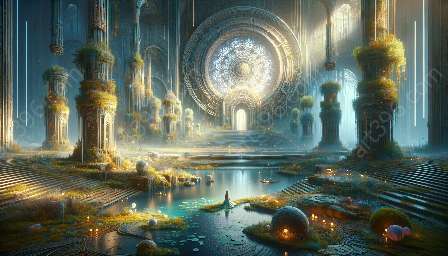Concept art, as an essential component of the creative process in various industries such as video games, films, and animation, is heavily influenced by different art styles. The intersection of art styles and concept art creation is a fascinating exploration that provides valuable insights into the diverse influences on the process. This article delves into the relationship between various art styles and the creation of concept art, while also considering the basic principles of concept art.
Understanding Concept Art
Concept art is a visual representation of an idea or concept, often used in the early stages of a project. It serves as a guide for visualizing characters, environments, and overall design aesthetics, providing a foundation for the final product.
Basic Principles of Concept Art
The basic principles of concept art encompass a range of elements, including composition, storytelling, perspective, color theory, and design aesthetics. These principles guide artists in creating compelling and cohesive visual concepts that effectively communicate the intended ideas and themes.
Exploring the Influence of Different Art Styles
Art styles, ranging from realism to abstract, play a significant role in shaping the approach to concept art creation. Each art style brings its unique characteristics, techniques, and visual language that impact the creation and interpretation of concept art.
Realism
The realism art style focuses on accurately depicting the visual world, often with meticulous attention to details and proportions. When applied to concept art creation, realism can lend a sense of authenticity and believability to the imagined worlds and characters, grounding them in a recognizable reality.
Impressionism
In contrast to realism, impressionism emphasizes capturing the essence of a scene or subject through loose, vibrant brushstrokes and the play of light and color. Concept art influenced by impressionism may evoke mood and emotion through the use of color and texture, offering a more evocative and interpretive approach.
Cubism
Cubism, with its fragmented and multifaceted portrayal of forms, can inspire concept art that explores unconventional perspectives, fragmented compositions, and the deconstruction of traditional visual representation. This art style can introduce complexity and depth to concept art, challenging conventional interpretations and inviting creative experimentation.
Minimalism
Minimalism, characterized by simplicity and reduction to essential elements, can influence concept art by emphasizing clean lines, negative space, and concise visual storytelling. Its impact on concept art creation lies in the effective use of space, form, and symbolism to convey powerful and uncluttered imagery.
Adaptation of Art Styles in Concept Art Creation
The adaptation of different art styles in concept art creation is a dynamic process that involves understanding the nuances of each style and integrating them into the conceptualization and visualization of ideas and designs. Artists often blend and reinterpret various art styles to bring depth, diversity, and innovation to their concept art.
Embracing Diverse Influences
By considering the influence of different art styles, concept artists can broaden their creative repertoire, infuse their work with varied aesthetics, and push the boundaries of visual storytelling. Embracing diverse influences allows for the exploration of new techniques, approaches, and expressions, ultimately enriching the concept art creation process.
Conclusion
The diverse landscape of art styles significantly impacts concept art creation, offering a multifaceted journey of exploration and adaptation. By recognizing the influence of different art styles and their compatibility with the basic principles of concept art, artists can expand their creative horizons and craft captivating visual narratives that resonate with audiences across diverse mediums.

